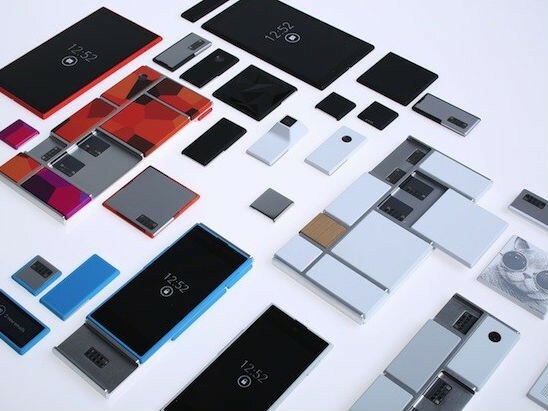Modular smartphones are the building blocks of a tech shambles
If you’re hoping a Lego-style phone will boost the industry and save the environment, we've got some bad news...

When I was a kid, I loved Lego. Heck, as an adult, I love Lego. There’s something wonderful about starting out with a pile of bricks and ending up with an object you had in your head. But that kind of modular flexibility is rare in technology. Instead, there’s a tendency towards appliance devices, with smartphones, tablets and PCs locking out users, finally eradicating the (somewhat romanticised) notion of being able to upgrade components to eke out yet more years of life from cherished kit.
Many of today’s smartphones have gone so far in the direction of appliances that you can’t so much as change the battery, but Phonebloks last year hatched plans to buck the trend. From the front, its concept design resembles a modern smartphone, but from the back you see a plate with holes on to which you connect all manner of components, Lego-style. The idea is that this facilitates flexibility, in being able to create a device suited specifically for your needs, and encourages eco-friendliness, in providing the means to upgrade individual components as and when needs arise. Google and ZTE have now also made announcements that they too will develop smartphones with interchangeable parts.
Like many advances in technology, this all seems so obvious and so simple. Why throw away an entire phone if you want more storage, a better camera, or some snazzy new feature everyone claims Samsung just copied from Apple while simultaneously running adverts about how stupid iPhone owners are? Instead, just bolt on the bits you want — literally. The tiny snag is the concept as it stands doesn’t make a great deal of sense — it’s smoke-and-mirrors simplicity rather than the real thing.
From an engineering perspective, it’s a nightmare. Today’s devices are carefully considered as complete units, their svelte forms only possible because engineers spend countless hours refining designs, devising bespoke components, and making the best use of the tiny amount of available space. Replace a case with a bunch of block-based components that could be attached in a somewhat random fashion, and you suddenly have all kinds of issues with routing, redundancy, compatibility and efficiency; there’s even the extra space taken up by the enclosures for the components themselves.

The assumption waste would be reduced also seems questionable. Mobile technology evolves at a blistering pace, and so how long would modular components truly remain compatible for? How long would it be before Exciting New Module X required Expensive New Motherboard Y? Although it might be possible to upgrade specific components in a piecemeal fashion, chances are you’d see a similar lifecycle for the bulk of them, hindering any eco-friendly savings. Even if you generously assume some kind of Magic Modular Phone, where the screen and motherboard could last for a decade, upgrading components alone will still have environmental impact; these things still need making and shipping, and old parts will (unlike a whole device) retain little resale value, leading to waste.
From an industry perspective, the concept of modularity is an even bigger ask. It was hard enough for the EU to convince manufacturers to settle on a charging standard, and even then the likes of Apple wriggled out of doing so by selling adapters. Now imagine getting everyone to agree on a modular standard. And should that miracle occur, what then? Major jumps in technology around such limitations would be less likely, innovation stemmed if components all had to adhere to a strict interchangeable spec. Every phone would soon resemble every other, while economy of scale would counter-intuitively be given a beating as well; because although these devices would all be akin to Lego, everyone would be manufacturing their own bits and pieces, in a vastly fragmented ecosystem.

So what first seems like a simple, obvious idea is in reality a mess waiting to happen, and one that will offer few benefits for the end user. They won’t save a great deal of money, few will care about interchangeable parts anyway, some will wonder why there are big gaps on the back of their smartphones if they can’t get the various bits to line up properly, and a few geeks will proclaim it the best thing ever, before getting distracted approximately eight seconds later by some great new Google robot that gets injected directly into your hypothalamus.
Really, it’s all a distraction anyway. What we should be doing is encouraging manufacturers, carriers and service providers to support gadgets for longer, and for developers to ensure apps are highly optimised to the point they’ll happily run on years-old devices. And when devices finally reach the end of their useful lives, they should be recycled and reused. But that kind of idealism costs money and so it’s probably just as unrealistic as that of Phonebloks.
READ MORE: Motorola’s Project Ara: the modular smartphone that’ll never be obsolete



